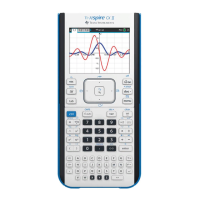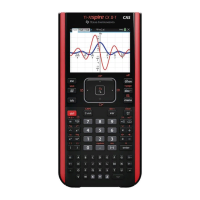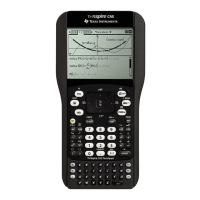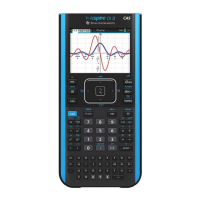84 TI-Nspire™ Reference Guide
RequestStr
Catalog
>
RequestStr promptString, var[, DispFlag]
Programming command: Operates identically to the first syntax of the
Request command, except that the user’s response is always
interpreted as a string. By contrast, the Request command interprets
the response as an expression unless the user encloses it in quotation
marks (““).
Note: You can use the
RequestStr command within a user-
defined program but not within a function.
To stop a program that contains a RequestStr command inside an
infinite loop:
• Windows®: Hold down the F12 key and press Enter
repeatedly.
• Macintosh®: Hold down the F5 key and press Enter
repeatedly.
• Handheld: Hold down the c key and press ·
repeatedly.
Note: See also Request, page 83.
Define a program:
Define requestStr_demo()=Prgm
RequestStr “Your name:”,name,0
Disp “Response has “,dim(name),” characters.”
EndPrgm
Run the program and type a response:
requestStr_demo()
Result after selecting OK (Note that the DispFlag argument of
0 omits the prompt and response from the history):
requestStr_demo()
Response has 5 characters.
Return
Catalog
>
Return [Expr]
Returns Expr as the result of the function. Use within a
Func...EndFunc block.
Note: Use Return without an argument within a Prgm...EndPrgm
block to exit a program.
Note for entering the example: In the Calculator application
on the handheld, you can enter multi-line definitions by pressing @
instead of · at the end of each line. On the computer keyboard,
hold down Alt and press Enter.
right( )
Catalog
>
right(List1[, Num]) ⇒ list
Returns the rightmost Num elements contained in List1.
If you omit Num, returns all of List1.
right(sourceString[, Num]) ⇒ string
Returns the rightmost Num characters contained in character string
sourceString.
If you omit Num, returns all of sourceString.
right(Comparison) ⇒ expression
Returns the right side of an equation or inequality.

